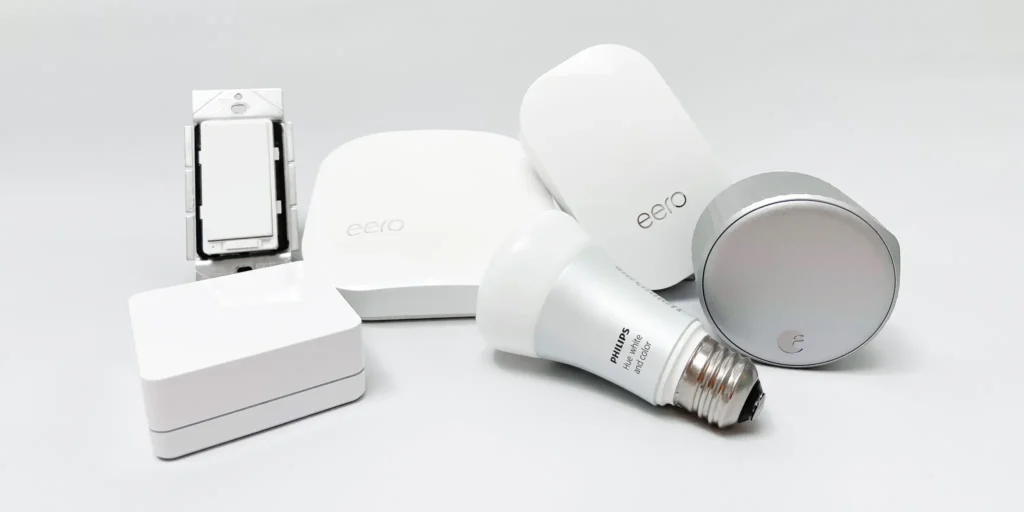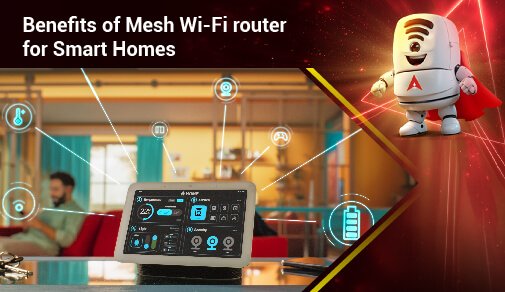In a world where smart homes are becoming more common, the need for strong and reliable internet has never been greater. Every smart device in your home — from security cameras and smart lights to thermostats and door locks — relies on a stable connection to function properly. If your WiFi struggles to keep up, your smart home will too. That’s where mesh WiFi comes in. In this guide, we’ll break down how mesh WiFi works, why it’s a game-changer for smart homes, and how you can set it up.
📶 What Is Mesh WiFi?
Mesh WiFi is a modern wireless network system designed to eliminate dead zones and provide consistent internet coverage throughout your entire home. Instead of relying on one central router, a mesh system uses multiple devices called “nodes” or “satellites” spread throughout your home. These nodes work together to create a seamless, unified WiFi network.
Imagine your traditional router as a speaker in a room. The farther you walk away, the quieter the sound gets. A mesh system is like placing multiple speakers around the house — you hear clear audio no matter where you are.
🧠 How Mesh WiFi Works

Mesh WiFi systems consist of a main router connected to your modem and one or more satellite nodes placed around your home. These nodes communicate with the main router and each other to form a dynamic, self-healing network. That means if one node goes offline, the others reroute traffic to keep your network running.
Each node broadcasts the same network name (SSID), so you won’t have to manually switch between networks as you move from room to room. Your device automatically connects to the strongest signal.
🏠 Why Smart Homes Need Mesh WiFi
A smart home is only as smart as its internet connection. Here’s how mesh WiFi improves smart home performance:
1. Eliminates Dead Zones
Dead zones — those frustrating spots where WiFi drops or slows to a crawl — can seriously disrupt your smart home. If your smart doorbell is out of range, you might miss visitors or package deliveries. A mesh system ensures every room (and even outdoor areas) has a strong signal.
2. Handles Dozens of Devices
Smart homes often have 20+ connected devices. Traditional routers struggle with this load, leading to lag and disconnections. Mesh networks distribute traffic across nodes, balancing the load and keeping every device connected.
3. Improves Device Responsiveness
Smart assistants like Alexa or Google Assistant respond faster with reliable WiFi. Cameras load more smoothly, smart bulbs react quicker, and automations trigger without delay. A mesh system ensures everything runs like clockwork.
4. Seamless Roaming
Ever walk from the kitchen to the bedroom while streaming music and it cuts out? Mesh WiFi maintains the connection as you move, so your devices don’t drop off or pause.
5. Outdoor Coverage
Want a smart sprinkler system or outdoor camera? Mesh networks can extend WiFi into your backyard or garage, unlike traditional routers that often stop at the walls.
🛠️ Setting Up Mesh WiFi for Your Smart Home
Setting up mesh WiFi is easier than you might think. Here’s a quick guide:
Step 1: Choose the Right Mesh System
Popular mesh WiFi systems include:
- Google Nest WiFi
- Netgear Orbi
- Eero by Amazon
- TP-Link Deco
Choose one that fits your home size and smart device load. Make sure it supports dual-band or tri-band frequencies for better performance.
Step 2: Plan Your Node Placement
Place nodes in areas where signal tends to drop, ideally halfway between your router and those devices. Avoid placing nodes behind large metal appliances or thick walls. Some experimentation may be required.
Step 3: Use the App for Setup
Most mesh systems come with an app that guides you through installation. It will walk you through connecting the main router, adding nodes, and checking signal strength.
Step 4: Reconnect Your Smart Devices
Once your mesh network is live, reconnect all your smart home devices to the new WiFi network. If you use the same SSID and password as before, many devices will connect automatically.
🔐 Mesh WiFi and Smart Home Security
A secure smart home starts with a secure network. Mesh systems often come with built-in security features:
- Automatic firmware updates
- Device blocking
- Guest networks
- Parental controls
Some premium systems (like Eero Secure or Orbi Armor) include malware blocking and VPN features. These tools help protect your smart home from cyber threats.
🧪 Mesh WiFi vs. WiFi Extenders: What’s the Difference?
People often confuse mesh systems with range extenders. Here’s how they differ:
WiFi Extenders create a separate network, often requiring you to switch networks as you move through your home. They also suffer from reduced speed.
Mesh Systems offer one unified network, intelligent routing, better performance, and seamless transitions between nodes.
🤔 When Is Mesh WiFi Worth It?
Mesh WiFi is ideal for:
- Homes larger than 1,500 square feet
- Multi-story homes
- Houses with thick walls or odd layouts
- Homes with 20+ smart devices
- Families that stream, game, or work from home
If you only use a few devices in a small apartment, a high-quality single router may be enough. But for most smart home enthusiasts, mesh is a worthy upgrade.
📈 The Future of Mesh WiFi and Smart Homes
As smart homes become more advanced, reliable connectivity will be even more crucial. Mesh systems are evolving too — many now support WiFi 6, which is faster and handles more devices efficiently.
In the near future, we’ll see even smarter mesh networks that can optimize bandwidth in real time based on device behavior. Combined with AI and edge computing, this will make smart homes more responsive, reliable, and secure.
✅ Final Thoughts
If your smart home is struggling with slow connections, laggy devices, or dead zones, mesh WiFi could be the solution you’ve been waiting for. It offers seamless, whole-home coverage that keeps all your smart gadgets working at their best.
Whether you’re just getting started or already deep into home automation, upgrading to mesh WiFi is one of the best ways to enhance your smart home experience.

